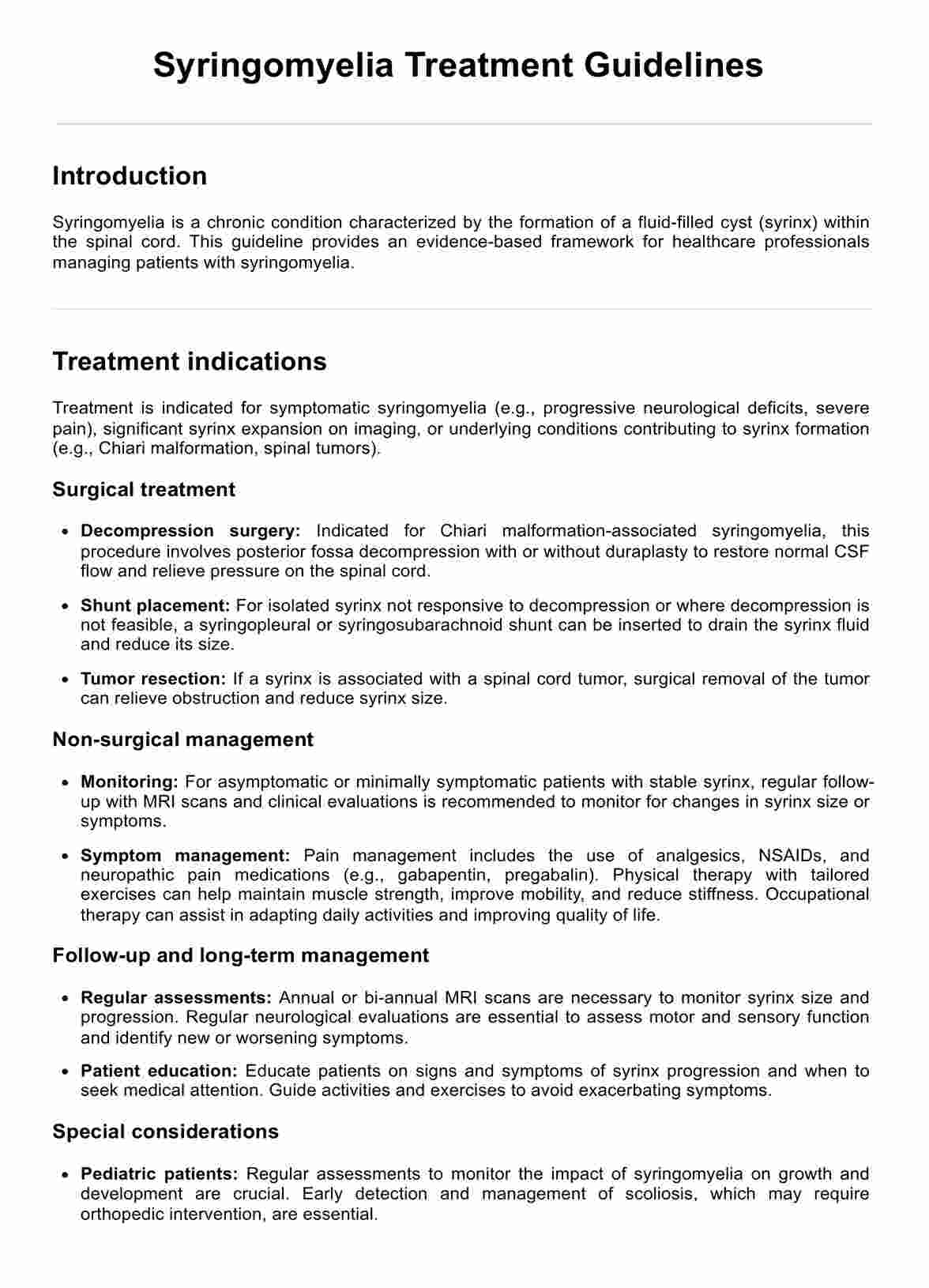Magnetic Resonance Imaging (MRI) is the primary tool for diagnosing syringomyelia, as it reveals the presence of a fluid-filled cyst within the spinal cord and any associated abnormalities.

Syringomyelia Treatment Guidelines
Discover comprehensive syringomyelia treatment guidelines for healthcare professionals. Learn about diagnosis, treatment options, and management.
Use Template
Syringomyelia Treatment Guidelines Template
Commonly asked questions
Common surgical treatments include posterior fossa decompression for Chiari malformations, shunt placement to drain the syrinx, and tumor resection if a spinal cord tumor is present.
Non-surgical management includes regular monitoring with MRI, physical therapy, pain management, and occupational therapy to maintain muscle strength and improve quality of life.
EHR and practice management software
Get started for free
*No credit card required
Free
$0/usd
Unlimited clients
Telehealth
1GB of storage
Client portal text
Automated billing and online payments











